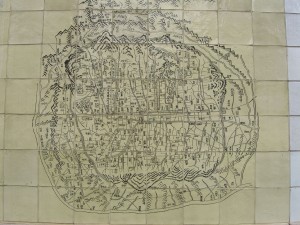One fun thing about the role-playing hobby is its kaleidoscope of worlds. I get to leap into so many interesting, thought-provoking worlds.
Players often move into world building at some point. And, of course, world building is hard. There are so many variables.
Microscope is a structured game of cooperative world-building. It’s a game you play with friends, but instead of exploring worlds or telling specific stories, you’re creating the history of a world.
One interesting thing about Microscope is its emphasis on writing history. So many world-building tools focus on nailing down details of physics and planet size, while Microscope encourages players to keep the physical world relatively ill-defined.
On to gameplay. Any world needs a few ground rules, so a game of Microscope begins with the Palette. As a group, the players list things that they adamantly do want to include or don’t want included in this world. The palette can include tropes, themes, concepts, and even specific items (“no singing swords”).
Then, each player adds a high-level Period to the world’s history (“The Age of Dragons”) or an Event within an already-defined Period (“The Fall of the Water Empire”). These are commonly written on index cards and laid out on the table in chronological order. (Online games just use a shared document.)
Play proceeds in rounds. At the beginning of every round, one of the players is chosen as the Lens, who directs the action of that round. (I hope the term is an E.E. “Doc” Smith reference.)
The Lens chooses a Focus for the round: “a person, a place, a thing, an institution, an Event, a Period, a concept–anything you want.” Every addition during this round must reference the Focus, however tangentially.
Each player in turn now adds a Period, an Event, or a Scene (Scenes are part of an Event). After everyone’s played this round, the Lens gets an extra turn, then the round is over and the group begins another round with a new Lens.
This continues until the history is sufficiently fleshed out, or you run out of time.
That’s pretty much the entire system. The rest of the book is devoted to implementation details and, more importantly, advice on approaching each of the elements above.
I played my game of Microscope online with a group of friends. Initially, we took turns in strict order (one turn per day), but eventually opened it up to one round per week, and anyone could take their turn at any time that week after the Lens had defined the Focus.
We built a sprawling, unique world of scattered islands in a populous ocean, the legacy of ancient and evil Sorcerer-Kings, and three distinctive non-racial empires all vying for control. Microscope delivers.
